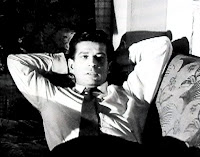 Brian Aherne is the head of a small but successful cement company. Rosalind Russell is his "girl Friday," the secretary who keeps things running smoothly; she also has a thing for Aherne though he's clueless. Virginia Bruce is a hot blonde model whom Aherne wants to hire for a new ad campaign. When a consortium tries to take over Aherne's company, his lawyer (Robert Benchley) advises him to get married and put his cash and assets in his wife's name to protect them. He decides to marry Bruce, but Russell makes Bruce think that Aherne is insulting her by trying to buy her, so she says no. Russell says yes, and they get married by a small-town justice of the peace (Chester Clute). She moves in with him, but to ensure there's no hanky-panky, Benchley also moves in and sleeps in Ahern's bedroom, with Russell in a guest room. However, when Aherne finds out what Russell did, he starts openly dating Bruce. Then it turns out that the weddings that Clute has been performing are invalid, so all bets are off as Russell and Bruce fight over Aherne.
Brian Aherne is the head of a small but successful cement company. Rosalind Russell is his "girl Friday," the secretary who keeps things running smoothly; she also has a thing for Aherne though he's clueless. Virginia Bruce is a hot blonde model whom Aherne wants to hire for a new ad campaign. When a consortium tries to take over Aherne's company, his lawyer (Robert Benchley) advises him to get married and put his cash and assets in his wife's name to protect them. He decides to marry Bruce, but Russell makes Bruce think that Aherne is insulting her by trying to buy her, so she says no. Russell says yes, and they get married by a small-town justice of the peace (Chester Clute). She moves in with him, but to ensure there's no hanky-panky, Benchley also moves in and sleeps in Ahern's bedroom, with Russell in a guest room. However, when Aherne finds out what Russell did, he starts openly dating Bruce. Then it turns out that the weddings that Clute has been performing are invalid, so all bets are off as Russell and Bruce fight over Aherne.This is a mildly paced screwball comedy, the kind that needs a good cast to put it over, and this one does have a pretty fair cast that helps to paper over some of the screenplay problems. Sometimes (AUNTIE MAME, HIS GIRL FRIDAY, THE WOMEN) I love Roz Russell, but more often I don't, so I’m pleased to count this in the plus column. She gives just the right amount of juice to what could have been an unpleasant character (for my money, Katherine Hepburn in BRINGING UP BABY goes way off the rails). Aherne is not my favorite actor, but he's nicely in control here; I generally always like Bruce. As usual, Benchley is very funny and not really given quite enough to do. I haven't even mentioned the plotline involving handsome and elegant John Carroll (pictured with Russell) who does a nice job as a gold-digger who sets his cap for Bruce. There are plotholes galore but the cast and the brisk direction by William S. Seiter make this generally enjoyable. [TCM]

















